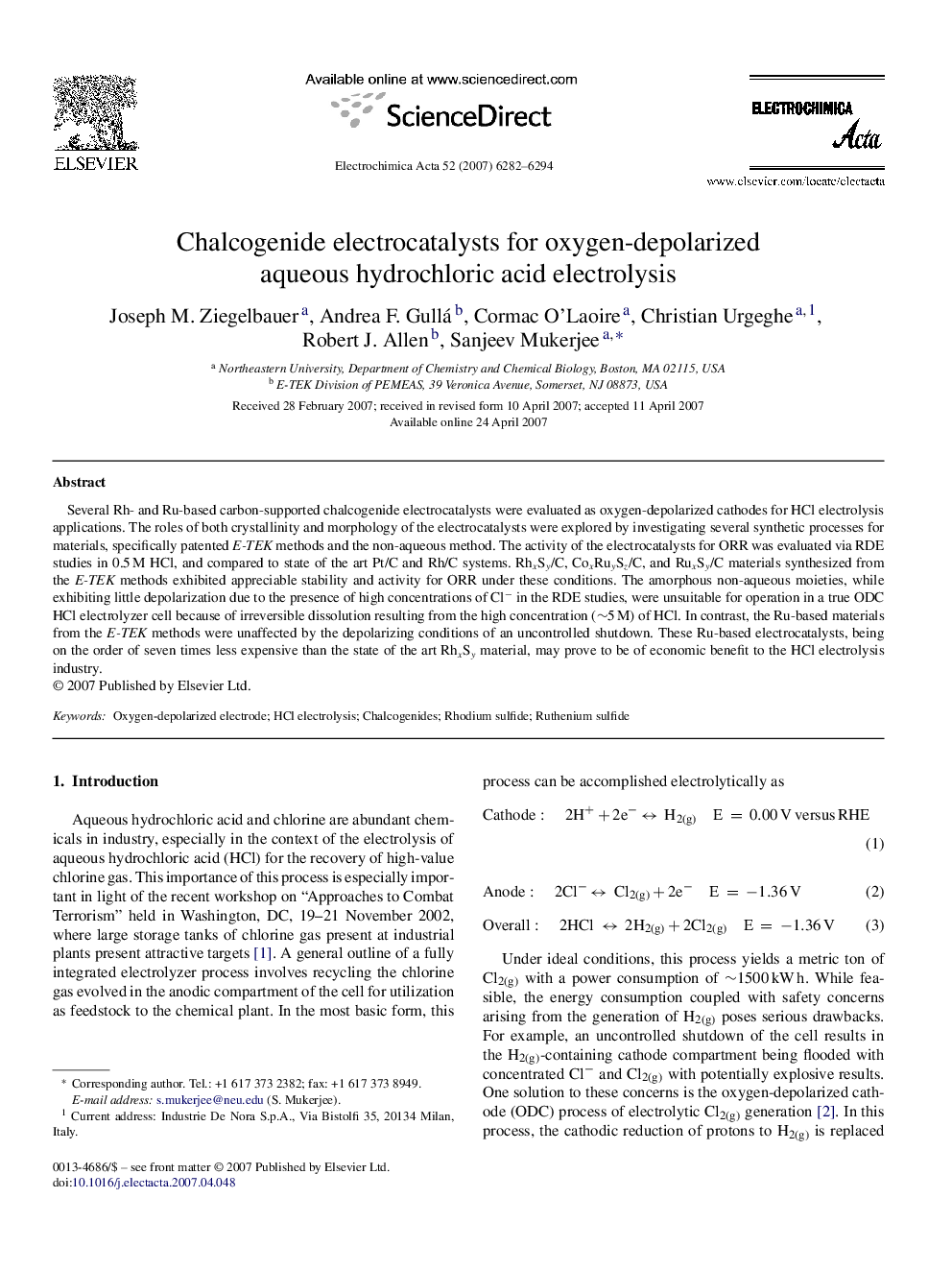| Article ID | Journal | Published Year | Pages | File Type |
|---|---|---|---|---|
| 192897 | Electrochimica Acta | 2007 | 13 Pages |
Several Rh- and Ru-based carbon-supported chalcogenide electrocatalysts were evaluated as oxygen-depolarized cathodes for HCl electrolysis applications. The roles of both crystallinity and morphology of the electrocatalysts were explored by investigating several synthetic processes for materials, specifically patented E-TEK methods and the non-aqueous method. The activity of the electrocatalysts for ORR was evaluated via RDE studies in 0.5 M HCl, and compared to state of the art Pt/C and Rh/C systems. RhxSy/C, CoxRuySz/C, and RuxSy/C materials synthesized from the E-TEK methods exhibited appreciable stability and activity for ORR under these conditions. The amorphous non-aqueous moieties, while exhibiting little depolarization due to the presence of high concentrations of Cl− in the RDE studies, were unsuitable for operation in a true ODC HCl electrolyzer cell because of irreversible dissolution resulting from the high concentration (∼5 M) of HCl. In contrast, the Ru-based materials from the E-TEK methods were unaffected by the depolarizing conditions of an uncontrolled shutdown. These Ru-based electrocatalysts, being on the order of seven times less expensive than the state of the art RhxSy material, may prove to be of economic benefit to the HCl electrolysis industry.
